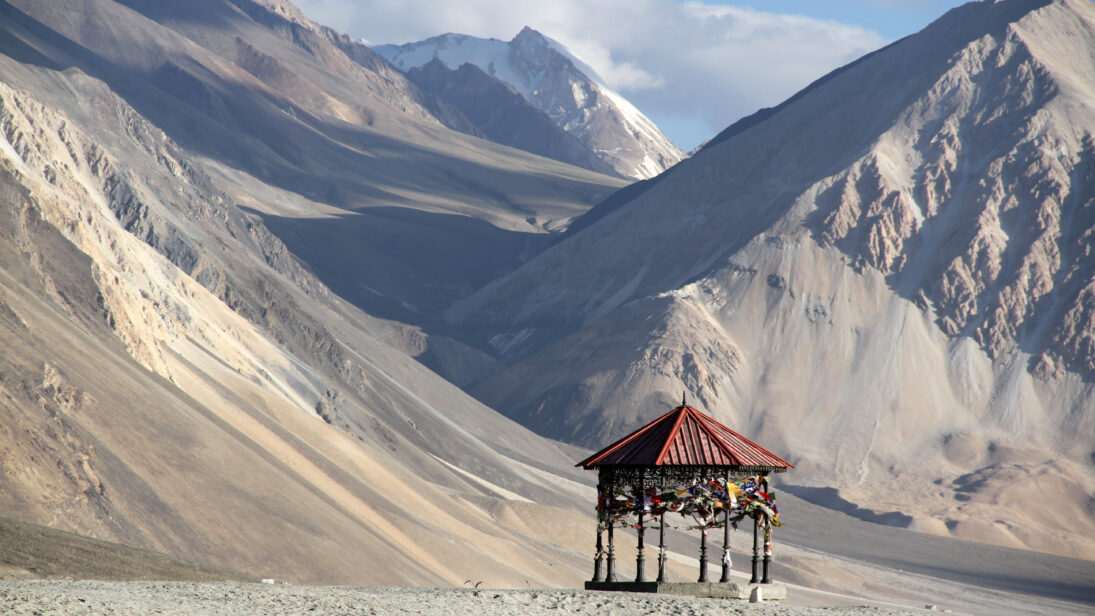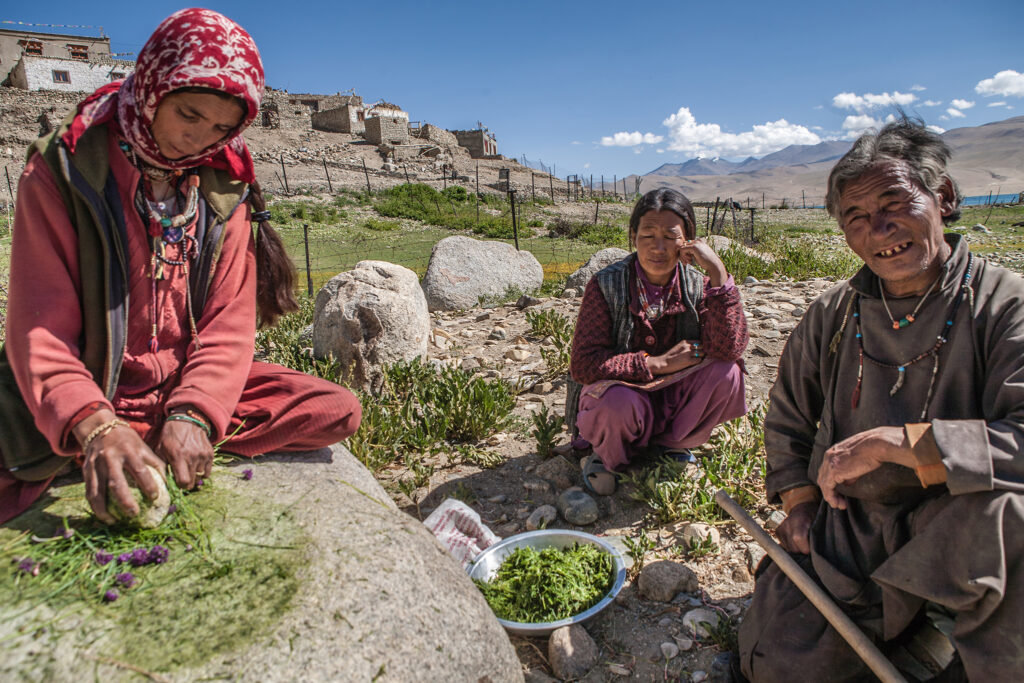
In the last few years, India has raised concerns over the mobilization of Chinese troops and equipment along the Line of Actual Control (LAC) in Ladakh. Relations between the two sides worsened in 2020 after Chinese and Indian troops clashed in Galwan valley. India and China subsequently made efforts towards restoring the status quo by holding several rounds of talks to discuss disengagement along the LAC. The last corps commander-level meeting was held in July 2022 at the Chushal border in Ladakh. Despite assurances by both governments and many rounds of disengagement talks, the LAC remains tense and the stalemate continues, adversely affecting the livelihoods of border dwellers and herders along the border. The conflict and the lack of development in border villages have forced many to flee to the town of Leh and thus the looming danger of mass migration from the border villages requires timely intervention by the Indian government and an inclusive Ladakh policy.
The border villages in Ladakh, including Chushul, Chumur, Dungti, Phobrang, and Demchok have witnessed unrest and Chinese incursions since India’s war with China in 1962. The two countries have never demarcated the border clearly, leading to bilateral disputes. The Changpas, a nomadic pastoral community living in villages along the LAC, are the first to bear the brunt of this conflict.
Caught in the Middle
The Changpas face a two-pronged problem; first, Chinese soldiers refuse their Pashmina goats and other livestock access to their grazing grounds in the winter and keep a tight check on their movement. Entirely dependent on livestock for their economic and social security, Chinese and Indian surveillance severely affects the livelihood of the Changpas. Second, they are excluded from the benefits of Indian development schemes due to the remoteness of the region and its ongoing political sensitivities.
Despite assurances by both governments and many rounds of disengagement talks, the LAC remains tense and the stalemate continues, adversely affecting the livelihoods of border dwellers and herders along the border.
Coupled with harsher winters and drier summers due to the ongoing challenges of climate change, constant military tensions across the LAC are a big blow for herders in these high mountain passes. Specifically, pastures traditionally used by the nomads have been shrinking steadily due to the ‘pushback policy’ adopted by the Chinese army. China has been consistently marking its territory in Ladakh inch by inch: developing infrastructure along the LAC and developing new settlements across Tibet to strategically grow its civil and military presence in the region. China has designed new buildings and roads in the disputed territory to add permanence and credibility to Chinese territorial claims. At the same time, the Indian army—specifically the Indo-Tibetan Border Police (ITBP)—prevents herders from venturing near many areas along the LAC, citing border agreements between India and China that strictly prohibit cross-border movement. Since the herders tend to cross the LAC while grazing their herd, Indian and Chinese troops prohibit them to venture even close to the LAC as a preventative measure.
The land available for grazing is shrinking on the Indian side since China now claims the traditional grazing land of the nomads, turning them into buffer zones. This development has pushed many cattle out into the cold, away from the traditional grazing land, especially during the winter season. According to local sources, around 85 newborn cattle died during the breeding season in 2020. A large number of cattle deaths could affect the livelihood of the border communities, as well as the Pashmina (wool) sector in the coming years.

If the interests of Changpas are not protected, mass migration might empty the village, which would indirectly aid the Chinese in their conflict with India. In the case of a Chinese incursion across the LAC, nomads, and villagers act as the eyes and ears of the Indian army; their timely information plays a vital role in India’s reaction to Chinese aggression. The first step in centering border populations in India’s LAC policy is opening lines of communication between those civilians and the Indian army, who patrol the border. Smooth communication between the two communities will go a long way in protecting India’s interests near the China border in Ladakh. It is also important for Indian policymakers from the Center to visit border dwellers and signal India’s commitment to protecting border communities – especially to China.
Despite Ladakh’s importance as a tourist hub, there are no special developmental schemes for the border villages at the frontline of the Sino-Indian conflict. These villages lack basic amenities, like roads, communication services, electricity, ration, and any intervention by the civil administration for developmental activities. When the India-China conflict periodically heightens in Ladakh, border villagers try to register their protest over the lack of infrastructure and the restrictions imposed by the Indian army to graze cattle in their own territory. However, while such protests have been taking place for many years, the lack of media attention and sparse communication technology has resulted in their grievances rarely reaching relevant authorities and government channels.
A Fresh Ladakh Policy
India sees China’s ongoing incursions in Ladakh as an abrogation of decades of painstaking political compromises and confidence-building between the two countries. Despite both sides agreeing to disengage, India has now made the wider bilateral relationship conditional on border stability. There is no doubt that India has to revise its China policy, especially as it concerns Ladakh.
Due to the two-pronged threat to their livelihoods, border dwellers and nomads are selling their livestock, leaving their villages, and migrating to larger towns, like Leh.
However, many herders who have moved to Leh struggle to find employment and yearn to return to their pastoral villages. India’s focus on the border regions will be vital in reshaping its China policy. However, the precarious situation in Ladakh and the importance of local communities in India’s larger border security indicates that India must develop a fresh LAC strategy with such communities in mind, not only for the sake of national security but for the livelihoods of the people themselves. Experts from Ladakh, local government bodies, and the impacted local communities must be involved in formalizing a new policy.
Additionally, there is a need to bridge the void between frontier villages and the local administration of Ladakh. While Ladakh is a tourist haven for nature-lovers and mountaineers, its spoils are not equal. Developmental work has mainly focused on Leh and neglected the frontier border regions, while China has improved its roads, infrastructure, and standard of living for the Tibetan nomads on its side of the border. Infrastructural development and integration into the mainstream are important steps to include in India’s new policy framework for Ladakh. There is little doubt that the LAC will remain heavily militarized for the coming years. Therefore, investing in and engaging with the border communities should be India’s first priority while dealing with China in the
***
Image 1: India/China Border via Flickr
Image 2: Women making spice at Tso Moriri, Ladakh via Flickr


